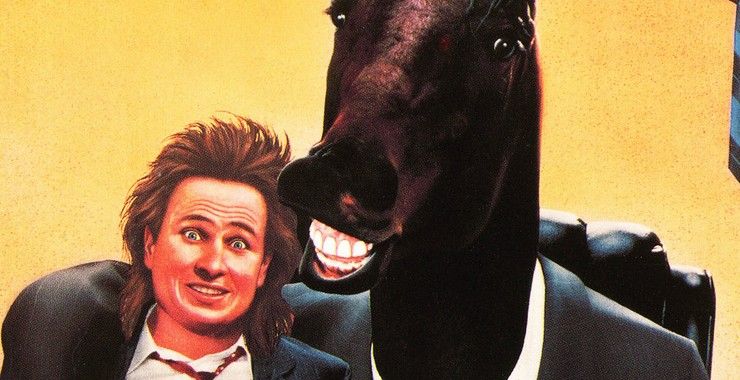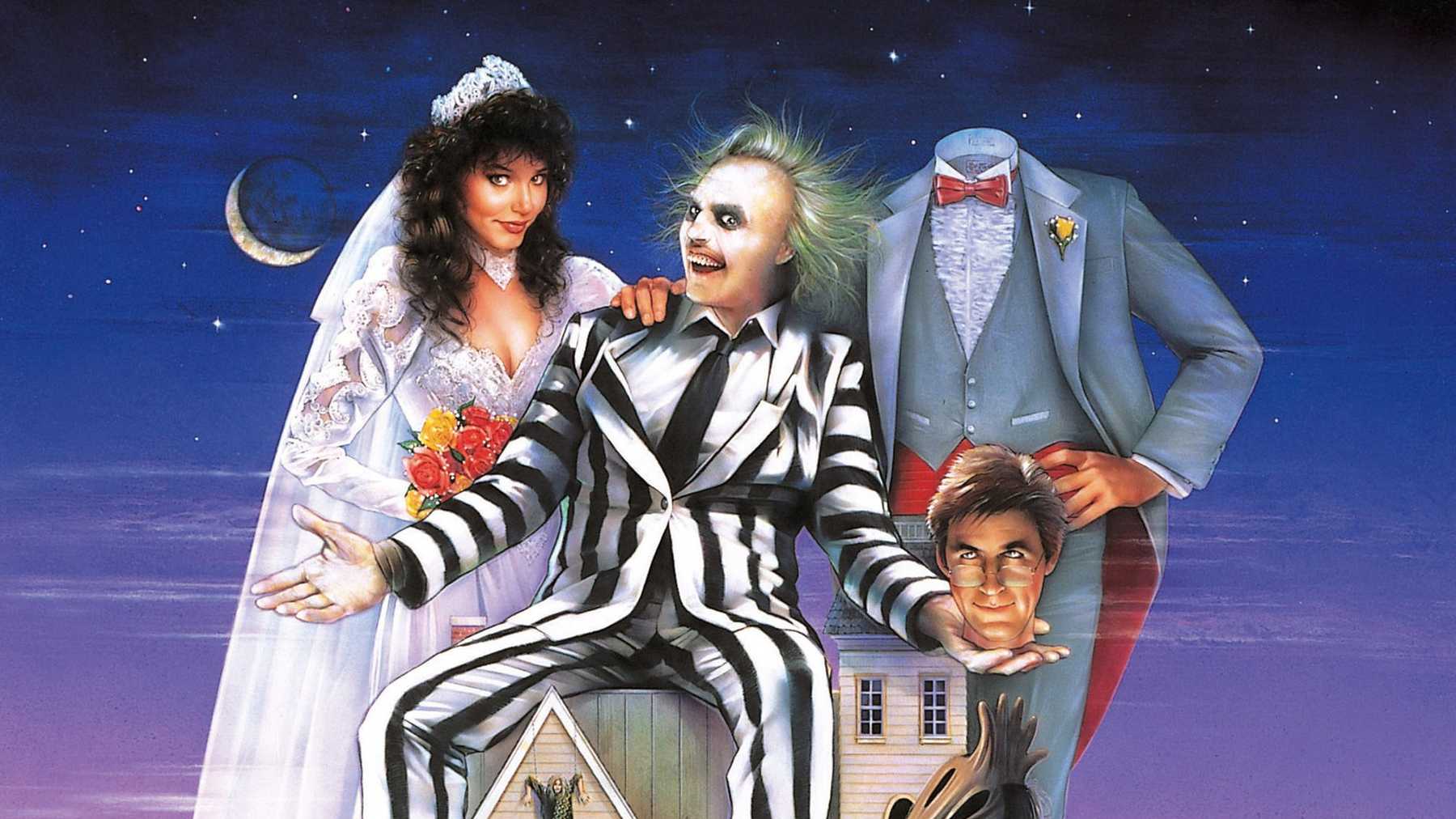Hot to Trot is a movie from the eighties about a horse. The horse is voiced by John Candy. He gets into a wacky misadventure with Bobcat Goldthwait. The score is by Danny Elfman. It is not a good movie. John Candy is a legend but he could not save that movie. Bobcat Goldthwait is a genius but he could not save that movie. Danny Elfman has only John Williams to contend with for the title of most iconic film composer of all time, but he could not save that movie. Could Tim Burton have saved that movie? Probably not and we’ll never know because he didn’t direct it. However, he could have and somewhere there is a universe in which he did. If I had the power to travel through the multiverse that wouldn’t be at the first place I’d visit, but it’s certainly one of them.

Hot to Trot was one of the, no doubt countless, uninspired, unoriginal scripts that Tim Burton had thrust into his hands after Pee Wee’s Big Adventure. Pee Wee showed the world that Tim Burton could make a great movie but more importantly it showed the studios that he could make money. Pee Wee’s Big Adventure grossed over five times its seven million dollar budget. The next stop for him was going to be Gotham City. He and Sam Hamm were hard at work on the Batman script but Warner Bros. was reluctant to pull the trigger. I imagine this was due to a combination of Burton’s relative inexperience; Pee Wee’s Big Adventure was just his first full length motion picture, and the general cultural perception of Batman. Sam Hamm and Tim Burton finished their script just months after the conclusion of The Dark Knight Returns. That miniseries had done a lot for Batman’s perception amongst comic book readers but hadn’t quite penetrated the mainstream consciousness. The average person’s perception of Batman was almost certainly tied to Adam West.
This left Burton in limbo. He was unable to make the Batman movie that the studio had sold him on and was stuck reading stacks and stacks of mediocre scripts. Who knows how many crummy, high-concept eighties comedy’s Burton passed on? Who knows how many of those crummy comedies were about horses? Well we know it was at least one. In this oppressive atmosphere of cinematic refuse the Beetlejuice script must have felt like a breath of fresh, greasepaint scented air.
There’s not a whole lot like Beetlejuice. It’s like Poltergeist by way of Looney Tunes. The original Beetlejuice script was admittedly pretty different and less comedic than the end result but it still had that spark of originality. It was still a ghost story with the perspectives and sympathies flipped. It’s heads and tails above Hot to Trot.
Beetlejuice went on to be an even bigger success than Pee-Wee’s Big Adventure. One can argue that Pee Wee had a much deeper penetration into our collective unconscious but Beetlejuice had an inarguably bigger penetration into our collective wallets. Pee Wee made 40 million but Beetlejuice made 70 million and inspired a highly underrated line of action figures by Kenner. (Hot to Trot made 6 million, languished 3 million under its budget and to my knowledge has no equivalent toy line.)

The Kenner figures ran from 1989 to 1990 and leaned heavily into the body bending transformations from the movie. For example Showtime Beetlejuice featured the winged, big top tent crowned head, which flies off to reveal a snake that jumps out of Beetlejuice’s neck hole. Exploding Beetlejuice comes apart and reveals a “hilarious bug” hiding in his chest. Shish Kebab Beetlejuice has the delightfully gruesome gimmick of a hole ridden torso into which his many skewer accessories can be plunged. Also his head comes off to reveal a single giant eyeball. It is one of the only figures that come without an accompanying minifigure of Beetlejuice in some strange, monstrous form.
Even the non-Beetlejuice figures make sure he factors into the equation. For example, the Adam Maitland figure comes with a small purple rendition of Beetlejuice in the form of a worm. It also includes a mask of the chicken headed form he intended to scare the Deetz family with and a head that slides up and down his arm like a ghoulish Harlem Globetrotters trick.

Kenner also produced a playset based on Beetlejuice’s grave. This Vanishing Vault used a mini-figure of Beetlejuice is his normal striped suit form combined with trap door action to create a novel little magic trick that appeared to shrink one of the full sized Beetlejuice figures.

There’s even a car, the Creepy Cruiser, which is apparently Beetlejuice’s “main mobile”. As ridiculous as it is, the Creepy Cruiser does a nice job of blending in with the Beetlejuice aesthetic, sporting an elongated and exaggerated hot rod profile, a cow skull hood ornament, and eels in the backseat.

The weirdest among Kenner’s offering has to be the 18″ Talking Beetlejuice doll. It looks rather disturbingly like a baby made up in a Beetlejuice costume. However, it does include a spinning head action so it’s not completely out of sync with the rest of the toys.

Capturing the Kenner history of Beetlejuice isn’t a deep collection to seek out. In the end, there were two series of Beetlejuice figures produced. The six figures in Series One included Adam Maitland, Shish Kebab Beetlejuice, Showtime Beetlejuice, Spinhead Beetlejuice, Harry the Haunted Hunter and Otho the Obnoxious. There were only two figures in Series Two, which included Exploding Beetlejuice and Shipwreck Beetlejuice. As for accessories, adding to the Creepy Cruiser and Vanishing Vault mentioned above, we can point you to the Gross Out Meter and the Phantom Flyer. For the completionist, don’t miss nabbing the four figure Neighborhood Nasties Series, which includes Hungry Hog, Old Buzzard, Street Rat and Teacher Creature.

Kenner not enough? The dedicated Beetlejuice collector still gets the odd treat or two every few years. The sixth scale Beetlejuice figure from Sideshow Collectibles is a prime example here. If you are looking for more, we invite you to dig around our Beetlejuice archive where you don’t even have to say Beetlejuice three times to make these collectibles appear.

Taking a broader perspective though, the Beetlejuice toys and animated series (which ran from September 9, 1989 to October 26, 1991 and produced 94 episodes) exist in the same strange place as the Toxic Crusaders and Rambo: The Force of Freedom. They’re products and that are clearly targeted toward kids but based on properties that aren’t all that kid friendly. That probably explains why the Beetlejuice figures didn’t run for all that long but it’s also a big part of what makes them so fascinating.
I know many people, myself included, who saw Beetlejuice as a kid and loved the movie. That said, I’m not sure that the average kid is down for a gross out supernatural takedown of eighties yuppie culture and honestly that’s a crying shame. Hopefully one day the stars will align and, for good or for ill (almost certainly ill), and Beetlejuice will finally get to “Go Hawaiian” as was originally intended for the sequel. We know Tim Burton has discussed it recently and hopefully on the day it happens we’ll be treated to a whole new array of head spinning, chest popping, tentacle sprouting plastic grotesqueries!

